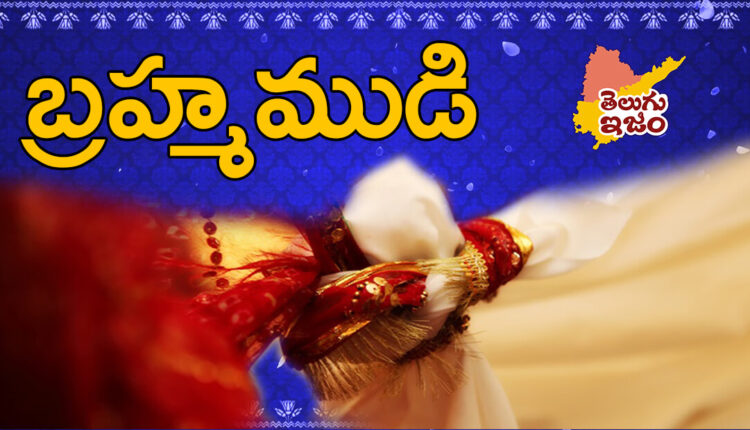Brahma Mudi : A Sacred & Holy Event In Hindu Wedding
Brahma Mudi : The Ceremony follows the completion of the talambras. During this ritual, the edge of the bride’s saree is tied together with the north edge of the groom’s attire. The knot is tied with the blessings of the Brahmins, signifying that from now on, both the bride and groom will jointly manage all their affairs as the heads of the household.
Through Vedic mantras, the groom asks the bride to take responsibility and become the mistress of the house, playing an active role in organizing and managing their home. This ceremony is also referred to as brahmagrandhi or “Kongulu mudiveyadam,” symbolizing the union of two bodies and two minds into one.
Various items, such as coins, flowers, darbhas (sacred grass), yellow horns, axe heads, kandapilaka (a type of flower), leaves, and vakka (a type of grass), are placed in the Kongumudi.
The priest recites the mantra:
‘Dhruvanteraja Varuno Dhruvam Devo Brihaspatihi, Dhruvanta Indrascha Agnischa Shatdharayatam Dhruvam.’
This mantra signifies that Brihaspati, Indra, and Agni will bless the couple with stability in their conjugal life. The priest may also invoke Pusha, a deity associated with auspiciousness and well-being while reciting the mantras. The Ashwini gods are invoked to guide and protect the couple on their journey of married life.
The Brahmamudi ceremony emphasizes the importance of jointly upholding the dharma (duty) of the household. It signifies not just the union of two garments but the fusion of two individuals into a new entity. It emphasizes that nothing is solely owned by one person; both partners have equal authority over their shared income, expenses, and planning.
Brahma Mudi & Darbhagaddi
Darbhagaddi, which consists of darbha grass, symbolizes eternal love. Darbha grass retains its properties even if dried out; it can sprout again when sprinkled with water. This symbolizes the desire for the marriage relationship to remain evergreen, with love and companionship alive throughout their lives.
The tying of the little finger of the wife with the little finger of the husband represents Brahma tying a knot. The essence of this gesture is that husband and wife should never separate. They should remain together during journeys, in times of joy, in times of exile, and on the path to salvation. When the wife becomes the husband’s partner, two bodies merge into one life.
The small knot between husband and wife signifies their intimate connection. While conflicts may arise between them, it reminds them that there should be no room for others to interfere in their relationship. If a gap is created, a third person may take advantage of it. Brahma ties the knot, reminding the couple to perceive themselves as two bodies united by one soul.
Also Read : Panigrahanam : An Important & Significant Event In Hindu Marriages

